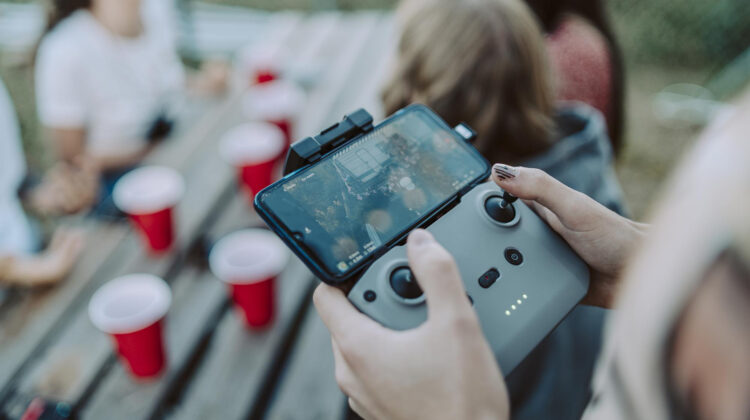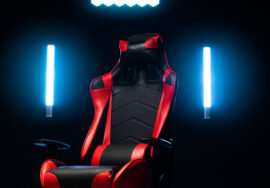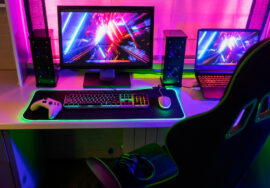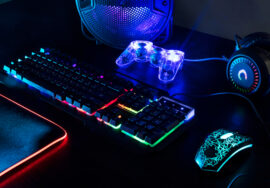
Gaming on the Go: Emerging Portable Consoles and Handheld Devices
Introduction: The Revival of Portable Gaming
Portable gaming is undergoing a renaissance. While smartphones dominate casual play, dedicated handheld consoles are carving a distinct space in the Gaming & Entertainment market. From powerful PC-based handhelds to hybrid systems that double as home consoles, emerging devices promise immersive gaming experiences without being tethered to a TV or desktop. For enthusiasts and casual players alike, the new wave of handhelds is redefining what it means to game on the go.
The Evolution of Portable Consoles
Handheld consoles are not new. From Nintendo’s Game Boy in the 1990s to Sony’s PlayStation Portable (PSP) and Nintendo Switch, each generation has pushed the boundaries of mobile entertainment. What makes today’s devices unique is the convergence of PC performance, cloud gaming, and AI-driven optimization—features that were once reserved for desktops now fit into the palm of your hand.
Why Portable Gaming is Growing
Several trends are fueling the resurgence of handheld consoles:
- Cloud Gaming Integration: Platforms like Xbox Cloud Gaming and Nvidia GeForce Now allow AAA games to be streamed anywhere with a strong internet connection.
- Advances in Hardware: Portable devices now carry processors and GPUs powerful enough to run modern games natively.
- Lifestyle Shifts: Remote work and travel-friendly entertainment needs have boosted demand for flexible gaming solutions.
- Community and Modding: Enthusiasts embrace handhelds for customization, portability, and indie gaming support.
Leading Portable Gaming Devices in 2025
Nintendo Switch 2
Nintendo continues to lead with the anticipated Switch 2, which expands on its hybrid formula. Rumored upgrades include a sharper OLED display, improved Joy-Con durability, and 4K upscaling when docked. With exclusive titles like The Legend of Zelda and Super Mario franchises, Nintendo remains the family-friendly favorite in Gaming & Entertainment.
Valve Steam Deck OLED
Valve’s Steam Deck OLED represents the PC gaming world’s answer to handhelds. Featuring a vibrant OLED display, expanded storage, and refined ergonomics, it delivers access to the full Steam library. The Steam Deck is particularly popular with players who want the versatility of mods, indie titles, and PC-level performance on the go.
ASUS ROG Ally Series
The ASUS ROG Ally is a Windows-based powerhouse. Equipped with AMD Ryzen Z1 Extreme processors and robust cooling, it supports AAA games at impressive frame rates. As part of ASUS’s ROG ecosystem, it also connects seamlessly with docks, displays, and accessories, making it both a portable and home gaming hub.
MSI Claw 8 AI+
MSI’s Claw 8 AI+ demonstrates how AI is reshaping handheld gaming. With Intel’s latest Lunar Lake processors and integrated Arc graphics, it offers AI-driven performance optimization. Hall Effect joysticks and responsive controls make it a standout for players who prioritize precision and durability.
Lenovo Legion Go
Lenovo’s Legion Go combines a large 8.8-inch display with detachable controllers reminiscent of the Switch. Running on Windows 11, it caters to gamers who want the flexibility of PC gaming and portability. Its ability to connect with Lenovo’s gaming ecosystem gives it strong cross-device appeal.
OneXPlayer X1 Pro
The OneXPlayer X1 Pro targets performance-hungry gamers. With a high-resolution OLED screen and AMD AI processors, it provides premium visuals and computing power. Though pricier, it appeals to those who want cutting-edge specs in a handheld device.
Cloud Gaming and Handhelds: A Perfect Match
The integration of cloud gaming is one of the biggest game-changers for portable consoles. Devices no longer need to rely solely on internal specs; instead, they stream demanding titles from remote servers. This trend lowers the barrier for mid-tier handhelds, allowing players to access games like Cyberpunk 2077 or Starfield on relatively affordable hardware. For Gaming & Entertainment, cloud-ready handhelds are unlocking new possibilities for mainstream adoption.
Handhelds vs. Mobile Gaming on Smartphones
A frequent question is whether dedicated handhelds are necessary when smartphones exist. The difference lies in optimization and immersion. Handheld consoles feature tactile buttons, joysticks, cooling systems, and displays designed for extended gaming, offering a superior experience compared to touchscreens. Smartphones are convenient, but handhelds provide a purpose-built environment that bridges the gap between mobile and console gaming.
Key Features to Look For in Emerging Handhelds
For consumers evaluating portable consoles, the following features matter most:
- Display Quality: OLED and high-refresh panels enhance immersion.
- Battery Life: Aim for devices offering at least 5–7 hours of play on standard settings.
- Performance Specs: Look for Ryzen Z-series, Intel Lunar Lake, or equivalent processors.
- Ergonomics: Comfortable grips, adjustable controls, and heat management are essential for long sessions.
- Ecosystem Integration: Devices that dock into home setups or support cloud gaming stand out for versatility.
- Storage: Expandable SSDs or microSD slots ensure room for large libraries.
Benefits of Portable Consoles in Gaming & Entertainment
The impact of handhelds extends beyond gaming:
- Entertainment Hub: Many devices double as streaming platforms for Netflix, Spotify, or YouTube.
- Social Play: Portable consoles support multiplayer gaming on the go, often via Wi-Fi or Bluetooth.
- Cross-Platform Sync: Progress can be shared between handhelds and home systems, providing continuity.
- Customization: Modding communities thrive on these devices, offering extended longevity and value.
Challenges and Limitations
Despite their promise, handhelds face challenges:
- Pricing: Premium models can cost as much as full-fledged laptops.
- Battery Drain: High-performance hardware often struggles with endurance.
- Compatibility Issues: Some Windows-based handhelds face software optimization hurdles.
- Weight and Portability: Larger screens improve visuals but compromise portability.
Balancing these trade-offs is key for manufacturers hoping to broaden adoption.
Expert Insights: The Future of Portable Gaming
Analysts predict that handheld gaming will continue to grow as AI and cloud integration mature. Devices will become lighter, more energy-efficient, and better at balancing performance with portability. Subscription models and cloud ecosystems will make libraries more accessible, while AR and VR integration may eventually bring immersive dimensions to handheld play. For the broader Gaming & Entertainment industry, portable consoles will remain central to how players engage with interactive media.
Conclusion: Gaming Without Limits
From the Nintendo Switch 2 to AI-powered handheld PCs, portable consoles are shaping the future of Gaming & Entertainment. These devices combine mobility, performance, and versatility, creating experiences once unimaginable outside of living rooms. For consumers, the choice comes down to priorities: Nintendo’s fun-first exclusives, PC-level versatility from devices like the Steam Deck, or powerhouse specs from premium models like the ROG Ally or OneXPlayer.
In 2025, gaming on the go isn’t just about convenience—it’s about unlocking a lifestyle where entertainment follows you seamlessly, whether you’re at home, commuting, or traveling abroad. The age of portable consoles has arrived, and it’s redefining how we think about interactive entertainment.







